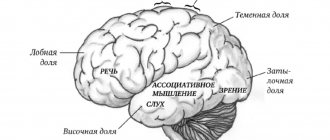Basic ideas of Buddhism: Pixabay Of the three world religions, Buddhism is the most ancient creed: it is more than 2.5 thousand years old. His principles and views are organically perceived by new generations. The ideas of Buddhism are present in many modern systems of self-improvement that are far from religion. Let us briefly consider what makes the values of this teaching so attractive.
Who invented Buddhism?
Birth of Prince Siddhartha Gautama. Poster of master Maligavage Sarlis. Sri Lanka, mid-20th century Amazon.com, Inc.
Unlike the other two major world religions (Christianity and Islam), Buddhism is a non-theistic religion, that is, it denies the existence of a creator God and an eternal soul. Founder of Buddhism In Sanskrit, the word “buddha” means “awakened one.” Siddhartha Gautama from the Shakya clan, who belonged to the kshatriya varna, that is, to the warrior class, was born in northern India, presumably in the middle of the 6th century BC. e. His biography very early became overgrown with various legends, and the historical layer firmly merged with the mythological, starting with the circumstances of his birth, which were very unusual. The prince's future mother dreamed that a white elephant entered her body, and this was interpreted as a harbinger of the coming into the world of a great man, the future ruler of the Universe.
Siddhartha's childhood and youth were cloudless: he knew neither illness, nor grief, nor need. But one day, leaving the palace, he encountered a sick man, an old man and a funeral procession. This shocked him so much that he left home and became an ascetic.
At the age of 35, during long meditation, Siddhartha achieves enlightenment, that is, becomes a Buddha, and begins to preach his teaching - the dharma. The essence of this teaching was the four noble truths. Firstly, the world is imperfect and full of suffering. Secondly, the source of suffering is desires and the thirst for life, which make the wheel of samsara rotate - the cycle of life, death, new births. Thirdly, one can escape the cycle of samsara by achieving enlightenment (bodhi) and ultimately nirvana, that is, a state of blissful non-existence. Fourth, there is an eight-stage path to liberation that includes ethical practice, meditation, and saving wisdom. This path is called the eightfold and middle path because it is equidistant from both the path of strict asceticism and a life full of pleasures (which ultimately turn into suffering).
The origin of Buddhist teachings [↑]
Buddhism was created by a disillusioned Hindu named Gautama Siddhartha. Legend has it that at the age of over 30, having achieved spiritual enlightenment, the prince began to be called Buddha, which means “enlightened one.” He sat under a tree and meditated until he realized the state of joy and peace, nirvana
, and his mind became detached and bright.
The teaching and heritage called the Torah was given by the Creator of the Universe on Mount Sinai to all the Jewish people, so that they would carry the light of the Torah to all other peoples of the world.
How is Buddhism different from Hinduism?
Buddha (center) as an avatar of Vishnu. Bas-relief of the Chennakesava temple. Somanatapura, India, mid-13th century © Jean-Pierre Dalbéra / CC BY 2.0
Buddhism is a world religion; therefore, representatives of any nationality can become Buddhists. This is one of the radical differences between Buddhism and Hinduism. Hinduism is the religion of India, which is professed by more than 80% of the country's population. Unlike Buddhism, Hinduism is a national religion, membership of which is determined by birth. Hinduism is a collection of different traditions, which are generally believed to be united by the recognition of the authority of the Vedas - the main sacred text of Hinduism. - a national and absolutely closed religion to penetration from outside. The social structure of Indian society was formed by four classes, varnas - Brahmans (priests and scientists), Kshatriyas (warriors), Vaishyas (farmers and traders) and Shudras (artisans and hired workers). Belonging to the varnas was determined solely by birth - just like belonging to Hinduism in general.
Buddhism, which was at first one of the many movements in opposition to Hinduism, became a radical reformist teaching both intellectually, spiritually, and socially. Buddhists placed a person's ethical merit above birth, rejecting the varna system and the authority of the brahmanas. Over time, this small movement developed its own social structure, corpus of sacred texts and cult practices. Having become a world religion, it spread far beyond the borders of the Hindustan Peninsula.
However, in India, Buddhism gradually declined. Today, less than 1% of Indians consider themselves Buddhists. In terms of numbers, Buddhism ranks only fifth among the religions widespread in India, significantly inferior to Hinduism, Islam, Christianity and Sikhism. Sikhism is one of the national religions of India, founded in the 16th century in Punjab. At the same time, the founder of Buddhism, Buddha Shakyamuni, is revered in Hinduism as one from the incarnations (one of the avatars) of the god Vishnu. But in the world ranking of religions, Buddhism is in fourth place: it is professed by 7% of the world's population.
What does it mean to be a Buddhist?
Buddha surrounded by followers. Painting in a Buddhist temple in Thailand Wikimedia Commons
For several centuries, the teachings of the Buddha were transmitted orally, and in the 1st century BC. e. was written on palm leaves, which were kept in three baskets. Hence the name of the Buddhist canon - Tripitaka (“Three Baskets”). There are several directions and many schools in Buddhism, but all Buddhists are united by the belief in the “three jewels” - the Buddha, the dharma (the teachings of the Buddha) and the sangha (monastic community). The rite of entry into the Buddhist community involves pronouncing a short ritual formula mentioning the “three jewels”: “I go under the protection of the Buddha, I go under the protection of the dharma, I go under the protection of the sangha.”
In addition, all Buddhists must follow the five rules set by the Buddha: do not harm living beings, do not steal, do not commit adultery, do not lie, and do not use alcohol or drugs.
Holy books
The main book, like the Bible for Christians, like the Koran for Muslims, for Buddhists is the Tripitaka. It is a collection of scriptures compiled into three different volumes. Hence the name, which translates as “three baskets”.
- Vinaya-Pitaka. Describes the rules of behavior of monks within the community, about five hundred rituals performed, gives examples from the life of the Awakened One and interesting parables about some traditions.
- Sutra Pitaka. It contains over ten thousand famous sayings of the Teacher and reveals the details of his life.
- Abhidharma Pitaka. A section on the theory of philosophy, which systematizes concepts, knowledge, and fundamental principles of Dharma.
Does Buddhism have branches (like Christianity)?
Mandala Vasudhara. Nepal, 1777 The Metropolitan Museum of Art
There are three schools of Buddhism: Theravada - “the teaching of the elders”, Mahayana - the “great vehicle.” The word “vehicle” implies that the teaching is a kind of vehicle that takes people to enlightenment. and Vajrayana - “diamond chariot”. Theravada, widespread mainly in Sri Lanka and Southeast Asia, is considered the most ancient movement, dating directly back to Buddha Shakyamuni and his circle of disciples.
From the point of view of Mahayana followers, Theravada is an overly elitist teaching, which they contemptuously call Hinayana, that is, the “lesser vehicle,” because it assumes that one can achieve nirvana only by taking the path of monasticism. Mahayanists argue that lay people can also achieve enlightenment. A special role for them is played by the teaching about bodhisattvas - enlightened people who voluntarily remained in samsara in order to help other people get out of the cycle of birth and death. Thus, in the Tibetan tradition, the spiritual leader of the Tibetans, the Dalai Lama XIV, is considered the embodiment of the Bodhisattva of Mercy Avalokiteshvara. Mahayana is widespread in China, Tibet, Nepal, Japan, Korea, Mongolia and Southern Siberia.
Finally, Vajrayana arose within Mahayana at the end of the 1st millennium AD. e., reaching its highest peak in Tibet. Followers of this movement argued that it was possible to achieve enlightenment within one life if one adhered to Buddhist virtues and resorted to special meditative practices. Currently distributed mainly in Mongolia, Tibet, Buryatia, Tyva and Kalmykia.
Open mind
It was not for nothing that I suggested leaving the question from the last part open. In one of the most common forms of Buddhism, Zen Buddhism, it is not customary to create concepts of the mind. Feel the difference between reasoning and thinking.
Reasoning always has a logical conclusion - a ready answer. If you like to reason and have an answer to any question, you are a smart guy who still needs to grow and grow in awareness.
Reflection is a state of open mind. You think about the question, but deliberately do not come to a logical, complete answer , leaving the question open. It's a kind of meditation. Such meditation develops awareness and promotes the rapid growth of human consciousness.
In Zen Buddhism there are even special tasks-questions for meditative reflection, which are called koans . If someday a Buddhist master asks you such a koan problem, do not rush to answer it with a smart look, otherwise you might get hit on the head with a bamboo stick. A koan is a riddle without a solution, it is created for reflection, not for cleverness.
If you decide to follow Zen Buddhism, you can close this article and discard any other ready-made answers to your eternal questions. After all, I’m also building concepts here. Is it good or bad?
Is there one Buddha or are there many?
Future Buddha Maitreya. An image of a thangka (drawing on fabric) commissioned by the 8th Dalai Lama in memory of his deceased mentor. Tibet, 1793-1794 Norton Simon Art Foundation
Buddhism postulates the existence of countless "awakened" Buddhas, of which Shakyamuni is the most famous. However, in Buddhist texts you can find the names of his predecessors - from 7 to 28. In addition, in the future, the coming of another Buddha is expected - Maitreya. Translated from Sanskrit - “loving, merciful.” Now, as Buddhists believe, the bodhisattva Maitreya resides on heaven Tushita (that is, in the “Garden of Joy”), and will subsequently appear on earth, achieve enlightenment, becoming a Buddha, and begin to preach “pure dharma.”
Lotus flower (padma)
It is the most famous and widely recognized Buddhist symbol in the world. Describes the inner world, humanity and life.
"Eternal Knot" in Buddhism
"Endless knot" (srivatsa)
In Buddhism, the endless knot symbolizes intertwining wisdom, compassion and love.
The Buddhist swastika is usually in a clockwise direction and is said to contain the entire mind of the Buddha.
Swastika
It is an ancient symbol of eternity, abundance, plurality, prosperity, well-being and long life.
It symbolizes Vajrayana, which is one of the three main branches of Buddhism.
Vajra
A Buddhist tantric symbol representing great spiritual strength and fortitude.
One of the most popular Buddhist symbols for tattoos
Nealmus
Symbolizes the journey to enlightenment. He teaches that the path is not always straight.
There are many other symbols
: a lion personifying the power of Buddha, two golden fish - a symbol of happiness and freedom, a “sankha” shell - characterizing the sound of awakening and calling, an urn of wisdom “Bumpa”, Eyes of Buddha/Wise Eyes, Four Guardian Kings and others.
“Hatred does not end through hatred. Hatred ends through love. This is an immutable law"
Is Buddha a god or not?
Hanabusa Itcho. Death of Buddha. 1713 Museum of Fine Arts, Boston
As mentioned above, Buddhism is a non-theistic religion. However, in Buddhist mythology, the “human” aspects of the life of Buddha Shakyamuni are adjacent to descriptions of his supernatural abilities, as well as phenomena of a cosmic scale that accompanied different stages of his life path. He is spoken of as a pre-existing being capable of creating special worlds - “Buddha fields”.
The ashes of Buddha are perceived as evidence of his mystical presence in our world and are surrounded by special reverence. According to legend, it was divided into eight parts and kept in the first Buddhist religious buildings - stupas (from Sanskrit this is translated as “top of the head” or “earthen hill”). In addition, the Mahayana doctrine appeared about the eternal “dharmic body” of the Buddha, which he possessed along with the ordinary, physical body. This body is identified both with dharma and with the universe as a whole. It is obvious that the Buddha is revered not only as a "great man" but also as a deity, especially in the Mahayana and Vajrayana.
In addition, Hindu deities were not expelled from the Buddhist pantheon at all - they were simply relegated to the background by the figure of Buddha. According to Buddhist teachings, gods, just like all other living beings, are subject to the cycle of samsara and, in order to escape from it, they need to be reborn in the human world - after all, only in it are Buddhas born. By the way, before being born for the last time, Buddha Shakyamuni, according to legends, was reborn more than five hundred times and was a king, a frog, a saint, and a monkey.
Spiritual practices [↑]
The spiritual practices of the East are impressive, but in the context of searching for the meaning of life, they turn out to be meaningless. If power over your body becomes an end in itself, then ultimately it leads to nothing. After all, all human actions are aimed not at the altruistic fulfillment of the Creator’s Will, but at satisfying their own selfish desires. Living in solitude, one can achieve amazing achievements in the field of body control, but this can only inflate the arrogant Ego.
Obeying commandments and teaching Torah truly, as the Creator requires, is much more difficult than all the spiritual practice of the East. Saying mantras is immeasurably easier than praying with concentration every day.
However, meditation is not alien to Judaism. But the goal of Jewish meditation is to achieve complete concentration of consciousness, remove extraneous thoughts, bring thoughts into harmony and direct them towards the Creator. Meditation was practiced by such great people as, for example, the outstanding expert on kabbalah and mentor Rabbi Abulafia and his followers, as well as one of the most famous Hasidic righteous Rabbi Nachman of Breslav.
The famous Kabbalist and popularizer of Judaism Rav Aryeh Kaplan has several books devoted to this topic: “Meditation and the Bible”; "Meditation and Kabbalah"; "Jewish Meditation". They are written in accessible language, and those who read them can see for themselves that Jewish meditation is a means of serving the Almighty, while Buddhist meditation strives only for power over one’s own body.
Do Buddhists celebrate New Year?
Toyohara Chikanobu. A mother and daughter walk to a Buddhist temple with other pilgrims to celebrate the New Year. No later than 1912 Claremont Colleges Digital Library
There are many holidays in folk Buddhism - very popular, although very distantly related to religion. One of them is the New Year, which is celebrated differently in different regions. In general, the Buddhist holiday cycle is based on the lunar calendar (everywhere except Japan). One of the main Buddhist holidays itself can be called Vesak, with which in different countries they associate from one to three key events in the life of Buddha Shakyamuni (birth, enlightenment, nirvana). Other holidays are Sangha Day, which commemorates the Buddha's meeting with his disciples, and Dharma Day, which commemorates the Buddha's first sermon. In addition, in Buddhist countries they celebrate the Day of All Dead: the pre-Buddhist cult of ancestors is very stable and plays a huge role.
Selfishness is the cause of all suffering
Buddhism teaches that all suffering comes from the false concept of Self. Yes, the existence of a separate Self is just another concept created in the mind. And it is this I, which in Western psychology is called the Ego, that suffers.
Any suffering can only stem from a person’s attachment to himself, his ego and selfishness.
What a Buddhist Master does is destroy this false Ego, freeing the student from suffering. And this is usually painful and scary. But it's effective.
Probably one of the most famous practices for getting rid of egoism is tonglen. To perform it, you need to imagine a familiar person in front of you and with each breath mentally draw into yourself, into the solar plexus area, all his suffering and pain in the form of a black cloud. And with every exhalation, give all your happiness and all the best that you have or that you would like to have. Imagine your close friend (if you are a woman) and mentally give her everything you want for yourself: a lot of money, a better man, talented children, etc. And take away all her suffering for yourself. It is even more effective to do this practice with your enemies.
Practice tonglen twice a day in the morning and evening for 5-10 minutes for 3 weeks. And you will see the result.
The practice of tonglen is something that will give you positive imprints in your mind, which after some time will come to you in the form of what you gave up and gave to another person.
Do Buddhists have temples?
Ernst Hein. Buddhist temple in Kyoto. Second half of the 19th century Pixels
The most famous Buddhist religious building is the stupa. Initially, stupas were built as reliquaries in which the remains of Buddha Shakyamuni were kept and venerated, and later - in memory of important events. There are several varieties of stupas, and their architectural appearance largely depends on regional traditions: they can be hemispherical, square stepped or pagoda-shaped. To earn good karma, Buddhists practice ritual circumambulation of the stupa.
There are also temples that are even more architecturally diverse. It is believed that the three treasures of Buddhism are concentrated in them - the Buddha (his statues and other images), the dharma embodied in the texts of the Buddhist canon, and the sangha, represented by the monks living at the temple or monastery.











